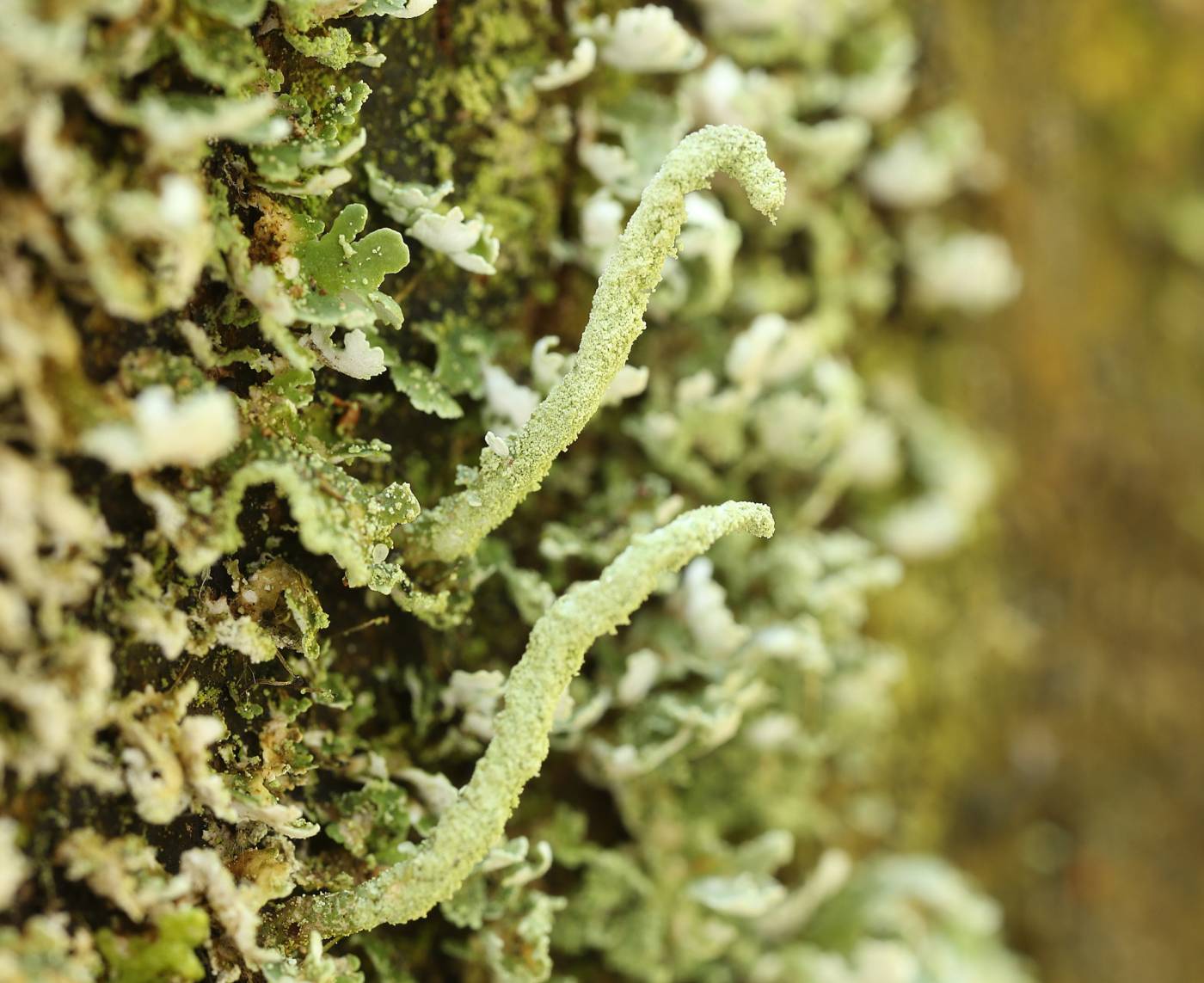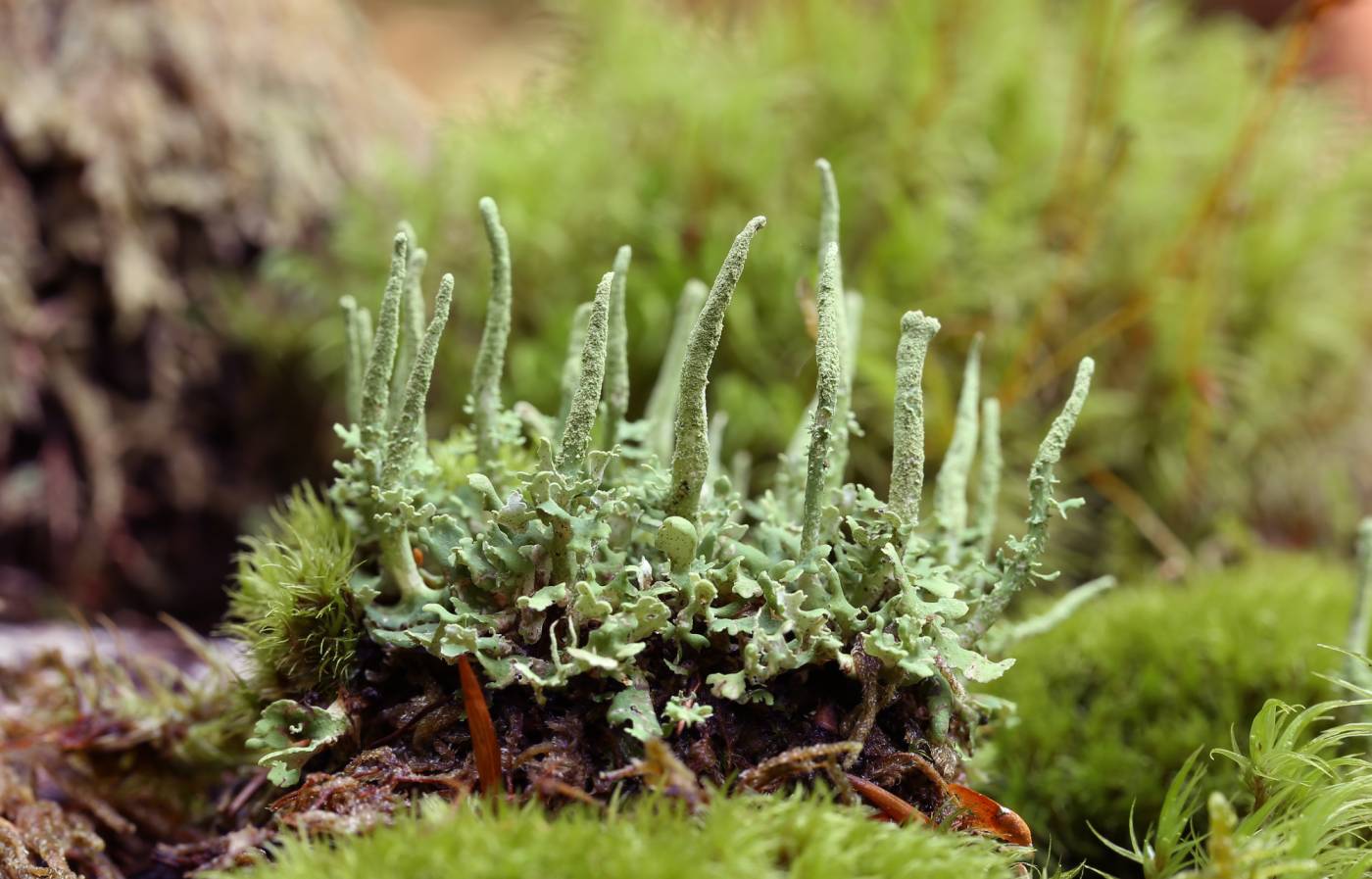A brown-fruited species with ascyphose finely sorediate podetia. It is very similar to C. ochrochlora, which differs in its robust podetia with the corticate base and common small scyphi. Preliminary molecular analyses (Pino-Bodas et al. 2011) did not support distinction of the two taxa. Despite, based on morphological differences, typical C. ochrochlora forms are kept separately in this atlas for now. C. coniocraea is often found only in the form of primary squamules. In such cases, it is indistinguishable from similar species, such as C. fimbriata.
Cladonia coniocraea is one of the most abundant Cladonia species in Europe and also one of the most frequently recorded lichens in the Czech Republic. It is usually found on decaying wood and tree bases but can also occur on acidic soil and, more rarely, on mossy rocks. It has a wide ecological amplitude, growing in various habitats from lowlands to mountains. The species is abundant all over the Czech Republic.
Literature: Pino-Bodas R., Burgaz A. R., Martín M. P. & Lumbsch H. T. (2011): Phenotypical plasticity and homoplasy complicate species delimitation in the Cladonia gracilis group (Cladoniaceae, Ascomycota). – Organisms Diversity & Evolution 11: 343–355.
taxonomic classification:Ascomycota → Lecanoromycetes → Lecanorales → Cladoniaceae → Cladonia
Red List (Liška & Palice 2010):LC – least concern
Occurrence in the Czech Republic
All records: 3322, confirmed 1699. One click on a selected square displays particular record(s), including their source(s).

